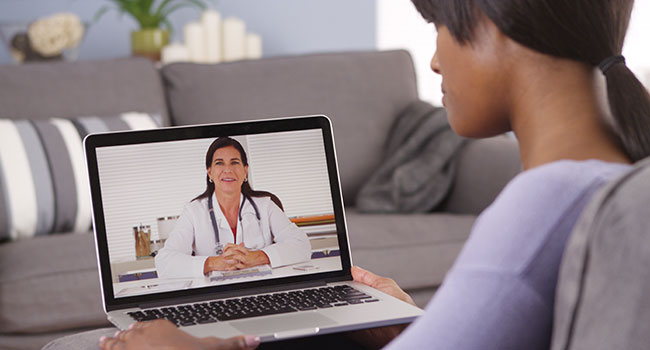
A Reopening Strategy
Resources to support students’ physical and mental health needs
- By Dr. Robert Darzynkiewicz
- October 01, 2021
As schools begin to welcome students back in full
force, there is increased attention on learners’
physical and mental wellbeing. Since the latest round
of COVID-19 relief funding includes dollars for
in-school healthcare services, district leaders are
encouraged to take this as an opportunity to revamp and strengthen
existing student health programs.
For many families, school is more than a place to learn. It is also a
place to receive access to healthcare, counseling, nutrition and other
essential services. A continuous, sustainable approach to school
healthcare services can ensure that the physical and mental health
needs of students are being met—and also that school staThmembers
are equipped to provide adequate support.
Here are some strategies for meeting students’ physical and mental
health needs as they return to school.
Strategies for Supporting Students’ Physical Health Needs
District leaders will need to consider how they currently support the
physical health of students, and if there are updates are needed before
fully reopening.
Ensuring Compliance with CDC and Local COVID-19 Guidelines
In the CDC’s COVID-19 K-12 Operational Strategy guidance, ffve
key prevention strategies are listed to help prevent the transmission
of the virus, including:
- Universal and correct use of masks
- Social distancing
- Handwashing and respiratory etiquette
- Cleaning and maintaining healthy facilities
- Contact tracing in combination with isolation and quarantine
To safely resume operations, I strongly recommend that district
leaders look at their existing processes and make updates as needed.
For example, establish social distancing and mask-wearing guidelines
with staThand students, and keep an inventory of essential supplies
(like face masks) on hand at each school site.
Providing In-school Telehealth Care to All Students
While telehealth has been around for many years, its popularity is
skyrocketing due to the pandemic. Telehealth is the marriage of
technology and healthcare, using a wide variety of technology and
electronic communications to promote remote health-related
services. Telehealth companies can partner with schools to provide
in-school and in-home telehealth care services to all students.
In addition to assessing symptoms related to COVID-19, telehealth
providers are able to address common health concerns, like
stomachaches or allergy symptoms, and to create a care plan tailored
to students’ speciffc needs. Having telehealth providers available to
support the work of school nurses and other staThmembers can help
districts address a wider range of student health concerns and reduce
absenteeism.
Educating Families about the COVID-19 Vaccine
The COVID-19 vaccine is an important piece of the school reopening
puzzle. With efforts to vaccinate educators continuing, a recent trial
showing 100% vaccine efficacy in children ages 12–15, district leaders
must work proactively to quell vaccine hesitancy.
The CDC compiled a COVID-19 Vaccine Toolkit for School Staff&
Childcare Workers that may be used to support communications with
teachers and other staffmembers. In addition to this, I recommend that
district leaders find a way to provide vaccine guidance and support to
families, especially those in underserved communities.
Strategies for Supporting Students’ Mental Health Needs
One of the most important considerations during this crisis and its
aftermath is the mental wellbeing of students, staffand the community
at large. The mental and emotional toll this crisis has taken on
people is immense and will be felt for months, and years to come.
Many students were in very vulnerable positions before this crisis hit.
That has worsened. Social determinants of health have changed drastically,
and situations are worse for many families than they were even
just a few months ago.
With this in mind, district leaders and teachers must prepare for
increased stress, anxiety and trauma and be ready to support students’
mental health needs.
Expanding Existing Mental and Behavioral
Health Services to Accommodate More Students
School counselors were already outnumbered pre-COVID, with an
average student-to-counselor ratio of 430:1. Just as they are able to
support the work of school nurses, telehealth providers can also
support the work of school counselors, case workers and other staff.
During a telehealth appointment, students can share their feelings
and symptoms with a provider, who can then collaborate with the
child and their family to create an action plan.
Providing Mental Health Support to Staff
To effectively meet the mental health needs of students, district staff
members need support, too. In “Resources to Support Mental Health
and Learning during School Reopening”, the National Education
Association (NEA) provides actionable strategies and resources for
ensuring the wellbeing of staff, students and families.
Applying Social-emotional Learning (SEL) Strategies
Throughout Education
The Collaborative for Academic, Social, and Emotional Learning
(CASEL) recommends that district leaders make SEL an integral part
of every student’s education. CASEL compiled a list of COVID-19
SEL resources, which includes recommendations such as:
- Providing consistency in daily routines to foster a sense of safety
and predictability.
- Taking the time to listen to students.
- Supporting students in building or maintaining a sense of
community and connection.
Keeping Every Student Healthy
Whether you are an administrator, a teacher, a counselor or a
nurse, you play an important role in keeping students well. By offering
physical and mental health resources in school, we can help more
students receive the care they need so they can focus on learning.
With the support of district leadership and increased funding, there
is an opportunity to reinvent school health and wellness services and
to make a real, positive impact in the lives of students and their
families.
This article originally appeared in the September / October 2021 issue of Campus Security Today.